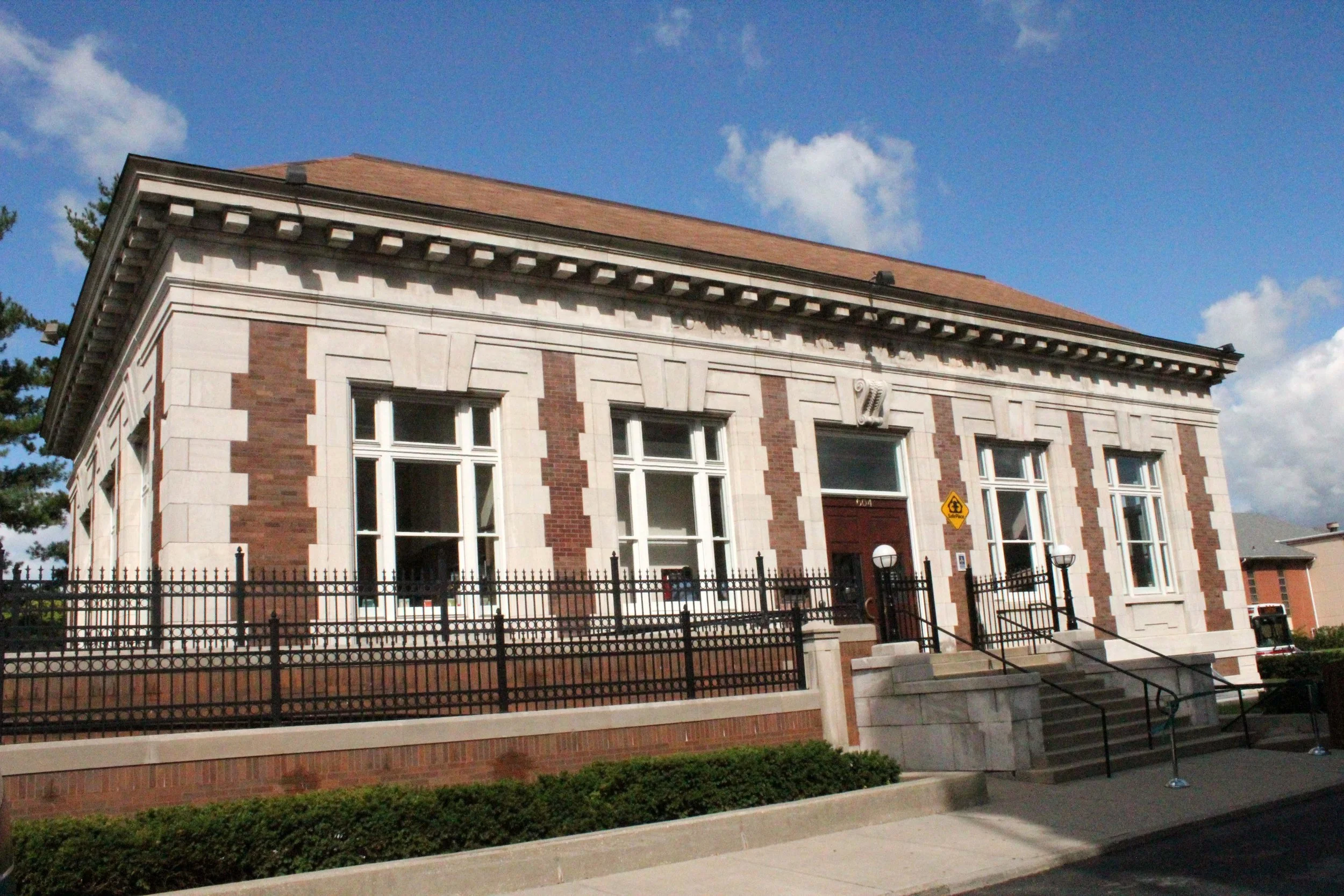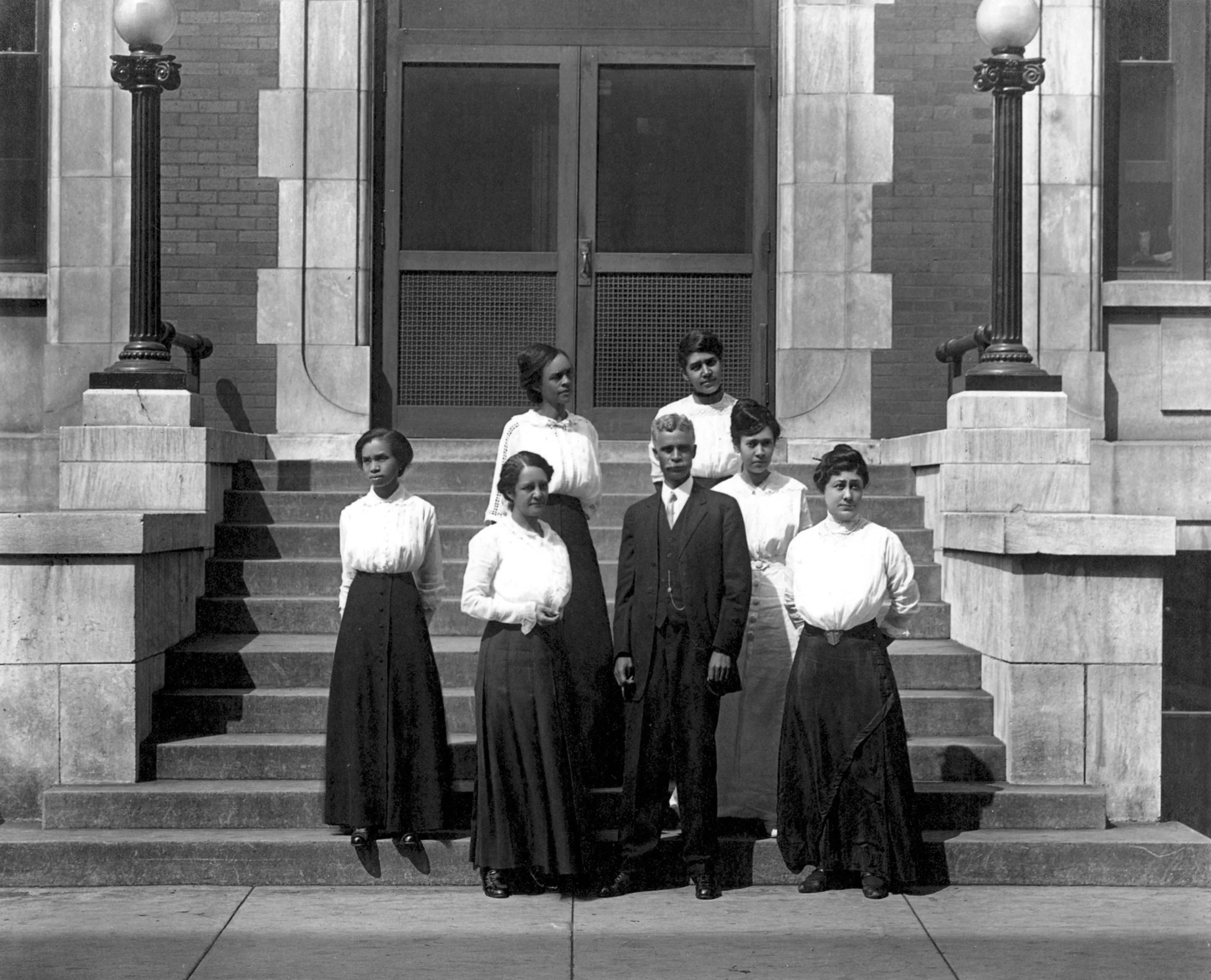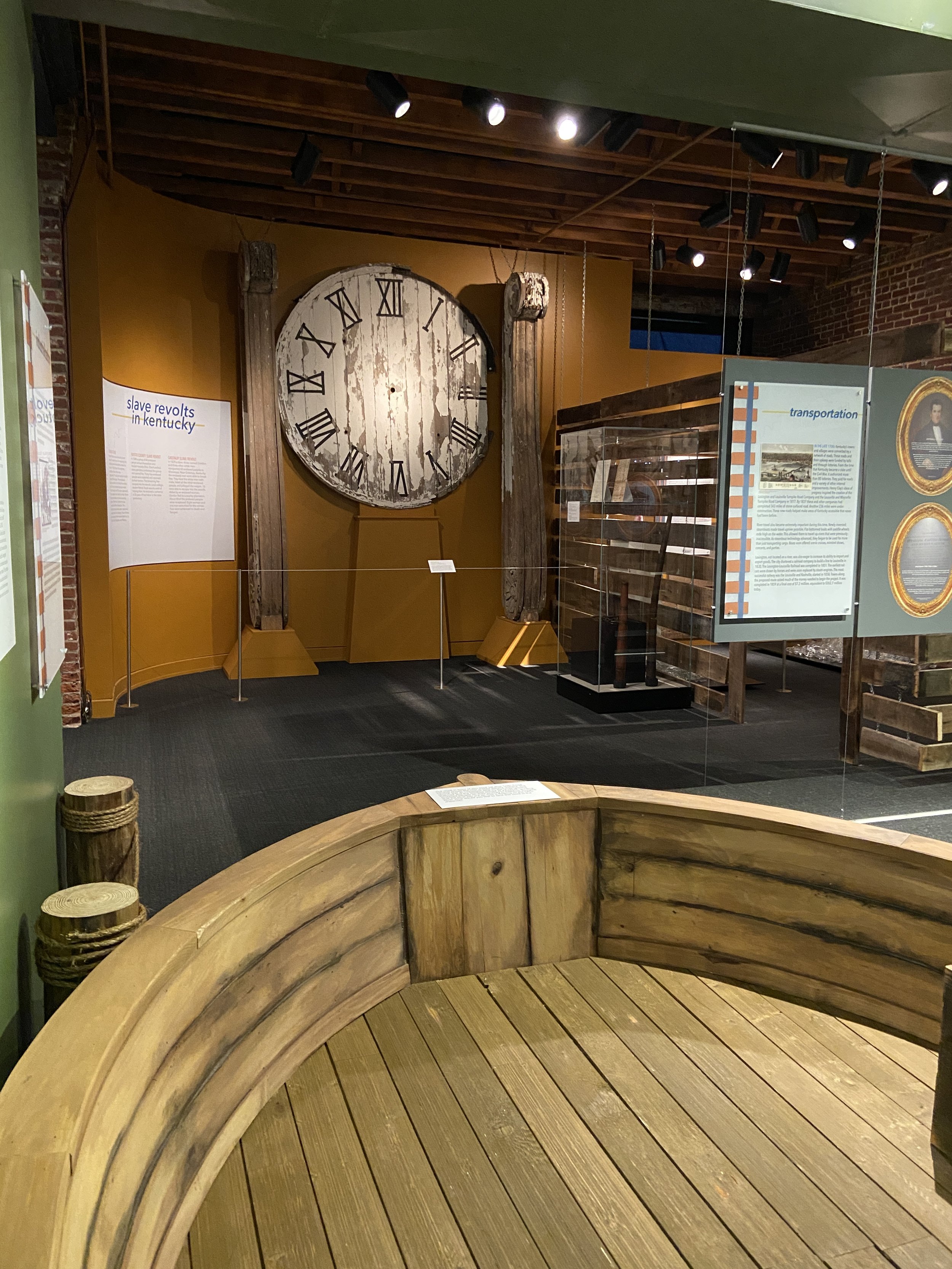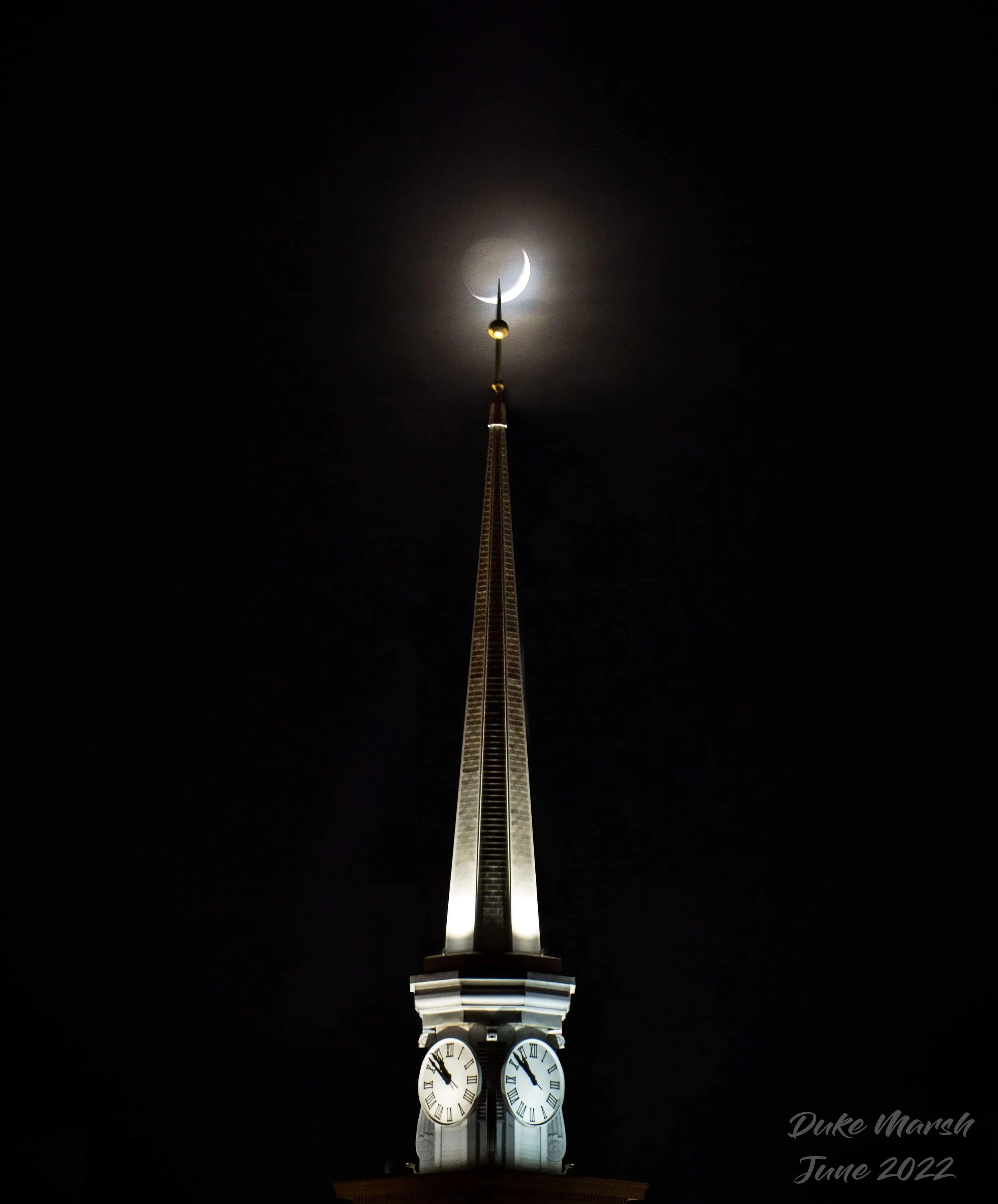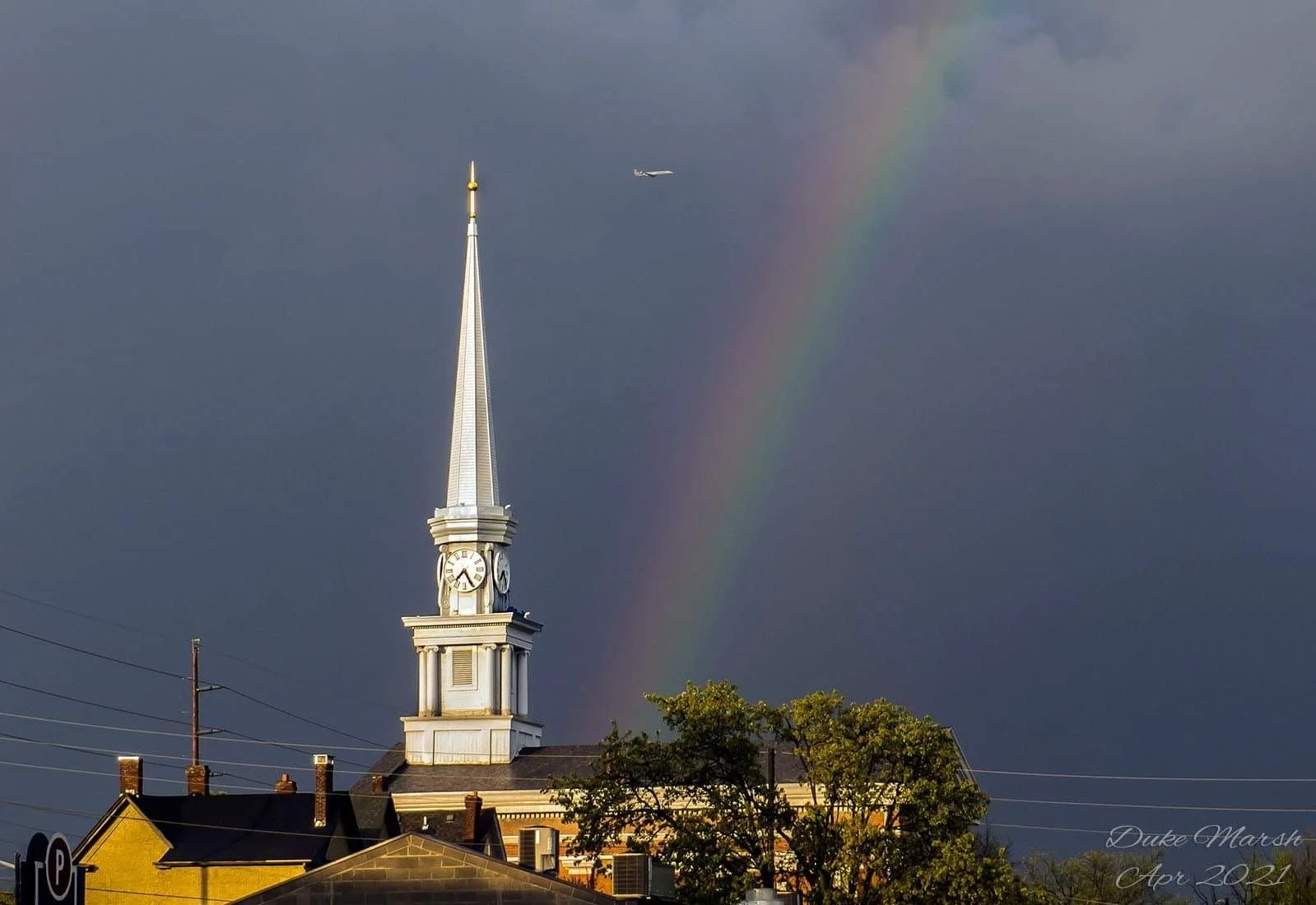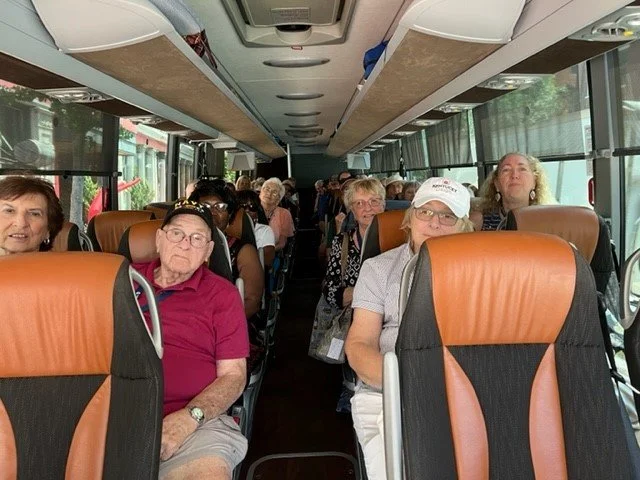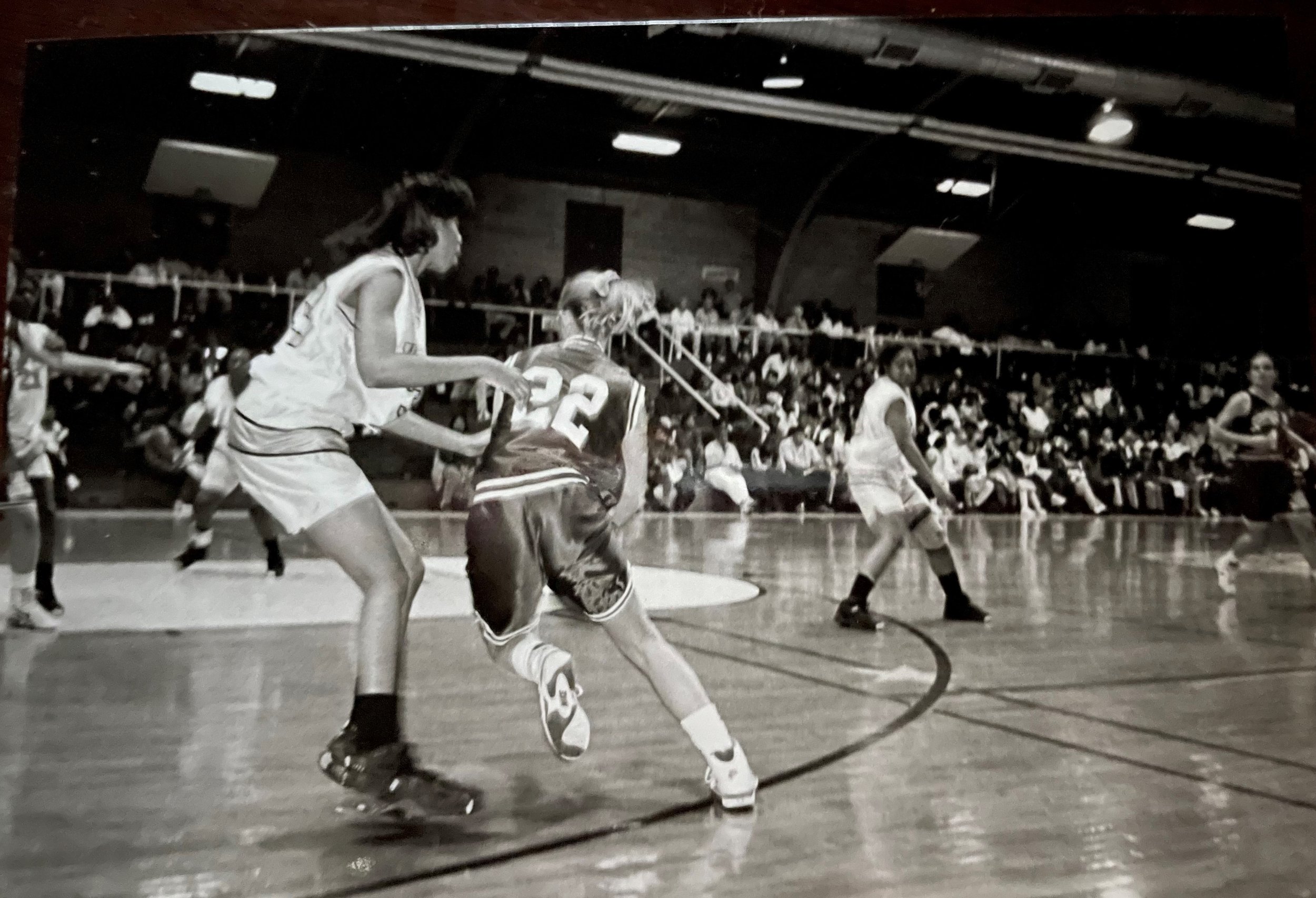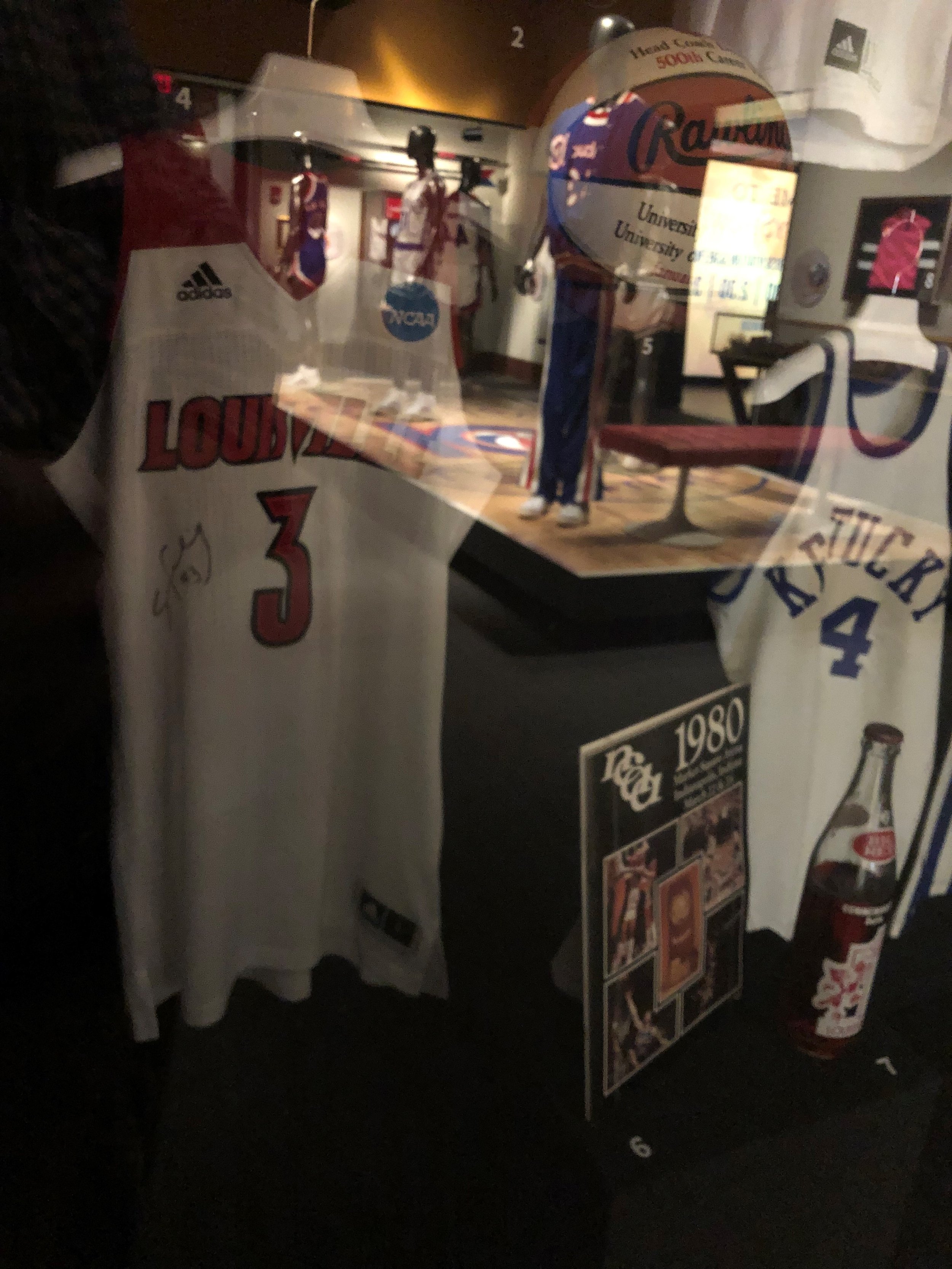1852–65 Town Clock Church Clock Face, Louisville Doctor’s 1925 Medicinal Alcohol Prescription, Title IX Turns 50, and More
This morning I am excited to share with you some great news!
Our exhibition West of Ninth: Race, Reckoning, and Reconciliation has been awarded a 2022 Leadership in History Award of Excellence from the American Association for State and Local History (AASLH). It is the most prestigious recognition for achievement in the preservation and interpretation of state and local history. This year, fifty-three awards were given to institutions representing thirty-one states and Canada.
AASLH provides resources for history lovers, professionals, volunteers, and enthusiasts. They provide crucial resources, guidance, professional development, advocacy, new publications, field-wide research, and a sense of connectedness to over 5,500 institutional and individual members, as well as leadership for history and history organizations nationally. It is the only comprehensive national organization dedicated to state and local history.
The entire Frazier team and I are so honored to be given this award for such an important exhibition. From the beginning, we knew how impactful this exhibition could be—and we poured our hearts into it. We are so proud to know that our hard work has been recognized by such a prestigious national organization.
From left, curator Amanda Briede with Walt and Shae Smith at the VIP private opening reception of West of Ninth: Race, Reckoning, and Reconciliation, September 17, 2021. Credit: Frazier History Museum.
The exhibition could never have been so successful without the inspiration, leadership, and collaboration of our partners, Walt and Shae Smith of the West of Ninth blog. Their connections with their West Louisville neighbors and willingness to share their stories are what made the exhibition so revolutionary. Also, they are just cool people with whom we love working!
We want to thank some other partners who helped make the exhibition extraordinary: the Courier Journal, for their partnership and for creating the special Breonna Taylor section visitors can take home with them; Corn Island Archaeology, for sharing their research and loaning us the many incredible objects they recently excavated from the Beecher Terrace neighborhood; and the Breonna Taylor Memorial team, for loaning us the original memorial to Breonna, which was present during the protests of 2020, and working with us to make sure it was installed so beautifully.
We also owe a huge thanks to our presenting sponsor Fifth Third Bank. The work we do is quite literally not possible without their financial support. We are grateful to have their help to tell Kentucky’s important history.
In today’s issue of Frazier Weekly, Rachel Platt gives more details about an upcoming program with the Western Library focused on Thomas Fountain Blue, the librarian who headed the Colored Branches of LFPL. I talk about the striking Town Clock Church clock face, an important part of the Underground Railroad that is now on display in The Commonwealth: Divided We Fall.
Looking forward to our June 23 Michter’s Speakeasy at the Frazier, Hayley Rankin highlights a prescription for medicinal alcohol a Louisville doctor wrote in 1925. And Megan Schanie draws on her experience as a college basketball player to discuss the fiftieth anniversary of Title IX.
If you have not had a chance to see our now-award-winning exhibition West of Ninth: Race, Reckoning, and Reconciliation, don’t worry! It will remain on view until September 4. I hope you will make plans to see this exhibition. I truly believe it is a must-see!
Amanda Briede
Curator
Frazier History Museum
This Week in the Museum
Cornelia and Thomas Fountain Blue Headstone Dedication and Bus Tour
Our Bridging the Divide programs in part help us learn our history, identify where we fell short, and highlight voices that couldn’t be silenced in the face of adversity.
Albert E. Meyzeek and Thomas Fountain Blue are two of those voices, intertwined in history.
Blue is the subject of our upcoming program, Honoring the Louisville Western Branch Library and Thomas Fountain Blue, on July 16.
Meyzeek, who was an educator and former principal of Central High School, set the stage for Blue when he fought for the desegregation of the Louisville Free Public Library (LFPL), fighting for his students to have access.
By the time the LFPL opened in 1905, its plan called for the establishment of a branch library for its “colored citizens,” thanks to his efforts.
Louisville Free Public Library Western Branch, c. 1908.
Louisville Free Public Library Western Branch, 2022.
That branch at 1125 West Chestnut would become the Louisville Western Branch Library and make history: It was the first free public library in the nation for African Americans, staffed entirely by African Americans.
Thomas Fountain Blue, the son of slaves and a native of Virginia who had been educated as a theologian at Virginia Union University, was chosen to be branch librarian, becoming the nation’s first African American to head a public library.
His story is featured in our West of Ninth: Race, Reckoning, and Reconciliation exhibition at the Frazier.
Thomas Fountain Blue with the first staff of the Louisville Free Public Library Western Branch, c. 1908.
From left, Cornelia Phillips Johnson and her husband Thomas Fountain Blue, undated.
Blue wrote about library policies and procedures, but also became a powerful voice for children, expanding the pool of young readers through story hours, clubs, and even contests, giving Black children access and knowledge.
Natalie Woods, the manager of the Louisville Western Branch Library, has transcribed many of Blue’s handwritten papers. She finds him inspirational, as someone who paved the way for others, like herself.
When Woods found out Blue and his wife Cornelia were buried in an unmarked grave at Eastern Cemetery she knew something had to be done—and it will be on July 16 at 1:30 p.m. That’s when a headstone funded by the Library Foundation will be dedicated as part of a public program the Frazier, LFPL, Lean Into Louisville, and Friends of Eastern Cemetery have organized in partnership. There is also a free bus tour with a limited number of seats.
Join us along with members of Blue’s family as we honor him for bridging divides.
Rachel Platt
Director of Community Engagement
Curator’s Corner: Original Town Clock Church Clock Face and Columns, c. 1852–65
If you have had an opportunity to visit our new exhibition The Commonwealth: Divided We Fall, you know some of the most striking objects in the exhibition are the original clock face and columns from the Town Clock Church. Located just across the river in New Albany, Indiana, the church was an important stop on the Underground Railroad. In the mid-1800s, the church was one of the tallest structures in New Albany and the clock could be seen from the Kentucky side of the river. It served as a beacon, guiding enslaved people on their journey to freedom. We are so proud to have these powerful artifacts on display in The Commonwealth.
Historic image of Town Clock Church in New Albany, Indiana, 1893. Credit: Town Clock Church.
Construction on the Town Clock Church began in 1849 and was completed in 1851. John Guest Atterbury was named the first pastor. Rev. Atterbury considered slavery to be a sin and copies of some of his anti-slavery sermons still exist today. Shortly after the church opened, Atterbury invited Rev. Henry Little for a week-long revival. During the revival, Little spoke openly about his anti-slavery views. At this time, it was dangerous to express such views so openly. Though Indiana was a free state, New Albany was primarily pro-slavery because the jobs of many of its residents who worked on the docks depended on the institution of slavery.
An original Town Clock Church clock face and columns on display in the Frazier’s exhibition The Commonwealth, June 16, 2022. Credit: Frazier History Museum.
The church had several African American members and was considered to be a safe space for free and enslaved African Americans. The Portland/New Albany ferry docked near the church and is one of the best-known crossing points in the area for African Americans seeking freedom. A storage area below the basement of the church is a likely spot where escaped African Americans could have taken safe shelter.
The Town Clock Church has recently undergone extensive renovations to restore historic aspects of the church, including returning the clock tower to its original height of 160 feet.
I hope you will take the time to visit The Commonwealth: Divided We Fall to see this beautiful clock in person and to learn more about the Town Clock Church and the Underground Railroad in Kentucky.
Amanda Briede
Curator
Duke Marsh Photos of Town Clock Church in New Albany
I was scrolling through Facebook this month when a picture posted on Jerry Finn’s page—a photograph of the Second Baptist Church, also known as the Town Clock Church, in New Albany, Indiana—stopped me in my tracks.
Finn simply wrote, “A celestial moment for this historic Underground Railroad Church.” Finn is part of the organization Friends of Town Clock Church.
The moon aligns with the steeple at Town Clock Church in New Albany, Indiana, March 2022. Credit: Duke Marsh.
The picture he shared was taken by local photographer Duke Marsh. Marsh took the picture earlier this month with the crescent moon behind the Town Clock Church.
That photo left a lump in my throat—an experience apparently shared by others, who posted comments characterizing the historic church as a beacon of hope.
“My God,” Louisville Urban League president and CEO Sadiqa Reynolds commented. “I imagine the ancestors seeing, planning, and escaping by the light of that same moon. Whew. Amazing.”
I reached out to Marsh, who has taken numerous pictures of the church steeple through the years. Here’s what he wrote me.
“I have always had an interest in photographing sky phenomena, whether it be weather-related during the day, or the Moon and stars at night. The Second Baptist Church, with its distinctive clock faces and steeple, adds a great point of interest when enhanced by an interesting sky. Also, it is an instantly recognized landmark in New Albany, and has been for many decades. I have gotten [a] great response to the many pictures I’ve taken of the church, and I always try to present it [in] its best “light.””
That landmark represents so much, then and now.
You can’t help but be moved by that picture, and a few others he recently captured that offer the hope of a new day, even now.
A rainbow appears over Town Clock Church in New Albany, Indiana, April 2021. Credit: Duke Marsh.
The sun aligns with the steeple at Town Clock Church in New Albany, Indiana, March 2022. Credit: Duke Marsh.
The sun sets behind the steeple at Town Clock Church in New Albany, Indiana, May 2022. Credit: Duke Marsh.
Rachel Platt
Director of Community Engagement
Louisville Doctor’s Medicinal Alcohol Prescription, June 5, 1925
The 1920s were roaring for a reason! With flappers, jazz, and bathtub gin, it is a decade that we still look to, a century later, for its illicit parties and raucous behavior. Only today, we get to enjoy ‘20s-themed parties in password-protected speakeasies without concern for the authorities or gangsters.
Despite the best efforts of the temperance movement to moderate alcohol consumption and restore morality to modern society, the prohibition of manufacturing and selling alcohol following the 1919 Volstead Act only drove people further into its arms. In fact, the limited access to alcohol in secret underground bars caused more people to drink in excess, not knowing when or where they might be served their next drink. The questionable quality of illegally obtained spirits also increased the popularity of cocktails vis-à-vis diluted and sub-par straight liquor.
A prescription for medicinal alcohol a doctor on Jefferson Street in Louisville, Kentucky, wrote June 5, 1925. Part of the Frazier History Museum Collection. Credit: Frazier History Museum.
Until the repeal of the Volstead Act in 1933, the only way to obtain alcohol legally was from a doctor. It allowed a maximum prescription of one pint of liquor every ten days. Prescriptions for medicinal liquor, such as the one pictured above, kept a number of federally approved distilleries in business throughout Prohibition. But sometimes they served as a front for bootlegging activity.
While it is difficult to determine the specific kind of liquor prescribed, we can see that a Dr. Marcus Phelps in Louisville instructed the patient to take a spoonful every two hours. This could have been for a number of ailments, including indigestion, asthma, or high blood pressure, that alcohol supposedly remedied.
Thankfully, you won’t need a physician’s signature to access any spirits at the Frazier’s Speakeasy event this Thursday, June 23. Michter’s brings the return of our Speakeasy series to you and you can purchase tickets here.
Hayley Rankin
Manager of Collection Impact
Museum Store: Sunflower T-shirt
Sunflower t-shirt sold in the Frazier’s Museum Store and online. Credit: Frazier History Museum.
It’s summertime and the livin’ is easy in this sunflower tee, designed and screened in Kentucky. Look cool while you stay cool! Get yours online here.
Return of Motor Coaches Another Buoy for Group Tourism
During these two-plus years of the COVID-19 pandemic, folks like me and my colleagues in the tourism industry have often wondered if—or when, and to what extent—visitors would return to attractions. I base my answer to these questions on personal observations, as well as the actual traffic we’ve experienced here at the Frazier Museum.
For the majority of 2020, the Frazier was a ghost town: We launched Frazier Weekly and did everything we could virtually to keep our members and patrons engaged. Our mission, after all, is to “ignite the human spirit with thoughtfully crafted stories.” The effort our staff put forth was herculean: We were up to the challenge to play the hand we were dealt to the best of our abilities.
The only problem was, tourism is an in-person experience—an experience that was unfortunately put on hold.
In early 2021, the Frazier started opening on a limited basis. This was not ideal, but it was what we had to do for the safety of staff and patrons alike. Attractions along Main Street in Downtown Louisville started to do the same as signs of a return to normalcy gradually appeared. I launched my Tiny Tours program, which was and continues to be a mainstay of my group sales efforts. This program allowed smaller groups to qualify for group rates to the museum, which was very much needed, and presented a step in the right direction to get visitors back into the museum in a safe setting.
But there was still something missing: The motor coaches, which regularly brought groups of forty visitors, had yet to return in force.
A Workman Transportation motor coach arrives outside the Frazier Museum’s Main Street entrance, June 16, 2022. Credit: Frazier History Museum.
Passengers on a Workman Transportation motor coach prepare to deboard at the Frazier Museum for a group tour, June 16, 2022. Credit: Frazier History Museum.
Finally, in April 2022, things changed! Perhaps it was people being vaccinated; maybe it was COVID fatigue. Either way, the buses started rolling into Louisville again as we headed towards Kentucky Derby 148 on May 7. The riverboats returned to Louisville, half-full buses were now arriving filled to capacity, and traffic in the Frazier was at an all-time high. People wanted to travel again, have experiences, and create memories with families and friends. Downtown Louisville was buzzing again, which was noticeable: As I went out for lunch, I would regularly see buses and travel company vehicles stopped at local attractions. What’s more, conventions were coming back to town and hotels were hopping with guests again!
By no means is the tourism industry all the way back to where it was; however, there is certainly optimism in the air. There are tangible indications that Downtown Louisville and its attractions, restaurants, and hotels are heading back to that prosperous pre-pandemic state of late 2019. The folks here at the Frazier cordially invite you to see for yourself by paying a visit to our museum and find out why we are “where the world meets Kentucky”!
Stephen Yates
Community & Corporate Sales Manager
Bridging the Divide
Louisville Mayor Greg Fischer Issues Official Apology to Black Six
It was a moving moment, an official apology from Mayor Greg Fischer to the Black Six, an apology that dated back more than fifty years centering on an uprising that happened in the Parkland neighborhood back in 1968.
Mayor Greg Fischer speaks at the Louisville Metro Human Relations Commission’s Luncheon, June 16, 2022. Credit: Frazier History Museum.
Audience members give Mayor Greg Fischer’s speech a standing ovation at the Louisville Metro Human Relations Commission’s Luncheon, June 16, 2022. Credit: Frazier History Museum.
It was met with a standing ovation at the Louisville Metro Human Relations Commission’s Luncheon on Thursday with two of the Black Six in attendance, Sam Hawkins and Manfred Reid, along with Ken Clay, who owned a music shop in the neighborhood at the time.
That apology stemmed from a program on the Black Six at the Frazier History Museum in May, hosted in partnership with Lean Into Louisville and the Courier Journal.
From left, Rachel Platt, Joi McAtee of Lean Into Louisville, Sam Hawkins, Mayor Greg Fischer, Ken Clay, and Manfred Reid pose at the Louisville Metro Human Relations Commission’s Luncheon, June 16, 2022. Credit: Frazier History Museum.
The Black Six were basically “framed,” as the Mayor said, on conspiracy charges related to that uprising. They were later acquitted, but the toll the case took on their lives was nevertheless devastating. And they never received an apology—until now.
Mayor Fischer said he cannot erase the past, but he can offer a sincere apology, and take responsibility as the current mayor, on behalf of the institution of city government.
Reid, who embraced the Mayor after his speech, said it meant so much, and was “an important step toward reconciliation.”
Hawkins said his “humanity is showing,” and the Mayor’s apology was appreciated.
If you’d like to learn more about the Black Six and our program, you can watch it here.
Rachel Platt
Director of Community Engagement
On This Date: Title IX Goes Into Effect, June 23, 1972
If I’ve learned anything during my seventeen years working at a history museum, it’s the extent to which the past affects the present. Specifically, I’ve learned that the hard work people put in to make change many years ago affected my day-to-day life growing up, and continues to influence my life today. How might my life be different without the seventy-year push for women’s right to vote, the invention of the computer, or the passage of Title IX?
Effective beginning June 23, 1972, Title IX states:
No person in the United States shall, on the basis of sex, be excluded from participation in, be denied the benefits of, or be subjected to discrimination under any education program or activity receiving Federal financial assistance.
While it’s often misconstrued narrowly as a sports-equity law, Title IX is actually an anti-discrimination civil rights law that covers all educational programs receiving federal assistance. But young me was not aware of any of this, and was just determined to run a faster mile and improve my left-hand dribble—not to mention make friends with teammates, many of whom remain an important part of my life today.
It didn’t occur to me until I was an adult that the passage of Title IX, three years before I was born, meant I was the first generation in my family with equal access to sports and educational programming.
I recently sat down with my mom, Kathie Burger Johnson, to explore how her experience growing up prior to Title IX was different from my own. Here are a few things I learned:
Her high school in St. Paul, Minnesota, only offered intramural sports for girls.
Many of the local private, religious schools offered high school sports for girls prior to Title IX, which meant, after it passed, they had a huge leg up on the public school competition.
Girls’ intramural sports were often scheduled early in the morning or late at night to keep the pool, court, or field open for the boys at more convenient times of day.
Some of the more athletic girls in her high school were picked on and called names.
There were not nearly as many women athletes to look up to and serve as role models.
It was very enlightening to hear about my mom’s high school experience specific to athletics and consider the impact of Title IX on my life. Having the opportunity to participate in a variety of sports, including track, cross-country, softball, and basketball, from the elementary level through college, taught me many things: how to work effectively as part of a team, that hard work leads to improvements, and that, when you inevitably fail, you get back up and try again. These are all valuable lessons I still lean on today.
Thank you, Title IX—and happy birthday!
Megan Schanie
Manager of School & Teacher Programs
Membership
Our Current ALL Member Exclusive Program!
On top of Summer Book Club, this summer, members will have the opportunity to enjoy and experience an exhibition and event “flight.” Participation will be easy! When members come to the museum, they will pick up a Frazier Frequent Flight Passport. This passport will list everything that is eligible for the program.
Simply put, if members attend ANY (4) four of the items listed, they will receive an exclusive Frazier Member Coffee Mug!
An Exclusive Frazier Member Coffee Mug sits to the right of our Frazier Frequent Flight Passport. Credit: Frazier History Museum.
What’s even bigger: if a member attends all (3) three of the special events that are listed within the passport, they will be entered into a door prize to receive an ultimate museum experience!
Merch, exhibitions, and experiences galore!
Sounds like a win-win.
This program began on June 1 and will end on September 30. Plenty of opportunities for you to visit and to earn that mug and more! Become a member today at ANY level in order to receive free general admission and to start planning your “frequent flights.”
The first of (3) special events is coming up this week!
ABOUT THE EVENT
Michter’s Speakeasy at the Frazier
Thursday, June 23, 2022
6:30–9:00 p.m.
Doors Open: 6:15 p.m.
Admission: $49 ($42 for Contributor-level Members and above)
Guests will enjoy Bourbon and rye tastings, great grub, a complimentary cocktail and toe-tappin’ Bourbon jazz tunes from Billy Goat Strut Revue. Swanky prize packages will go to the best-dressed couple and individual as well as a contest of Best-Dressed Duo and Best-Dancing Duo judged by The Nitty Gritty.
The signature cocktail will be a Black Manhattan and tastings will be led by Michter’s Master Distiller Dan McKee and Master of Maturation Andrea Wilson.
We’re going back to the Roaring Twenties—join us!
Amanda Egan
Membership & Database Administrator




